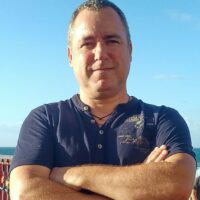– Full Professor of Veterinary Surgery at the University of Las Palmas de Gran Canaria (Spain).
– Degree in Veterinary Medicine (1994) and PhD, also in Veterinary Medicine (2001) in the Universities of Córdoba and Las Palmas de Gran Canaria (Spain), respectively.
– Collaborator in 7 public research projects, in Spain, Italy and Cuba.
– 65 published papers indexed in JCR, most of them in Q1 Journals and most of them as main coauthor. Presented more than 90 communications to national and international meetings and 5 books and book chapters written.
– Associated editor of the BMC Veterinary Journal and Animals Journal, Q1.
– Always involved in the objective assessment of lameness in horses and dogs (biomechanics) and, since 2013, in the use of regenerative -reparative medicine, as Mesenchymal stem cells and Platelet-rich Plasma derivatives.
– Since 2018 is member of the ECVMSR, belonging to the credentials and recertification committees.
Levels of Teaching:
* to Undergraduate students, I teach surgical techniques and procedures of rehabilitation and physiotherapy in small and large animals. I am the supervisor (coordinator) of those subjects
* to Postgraduate students, At the University of Las Palmas de Gran Canaria, I teach a module for PhD students (redaction of scientific papers) and I am also the supervisor; in Italy (Bologna) I teached a master module of sports medicine and rehabilitation.

